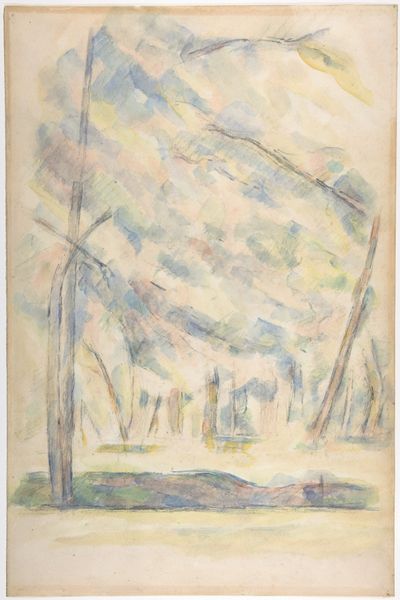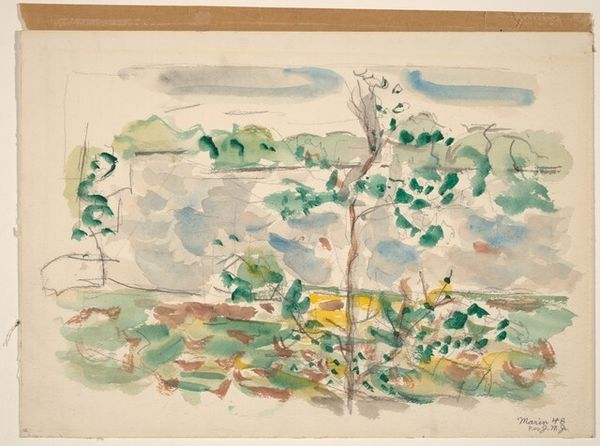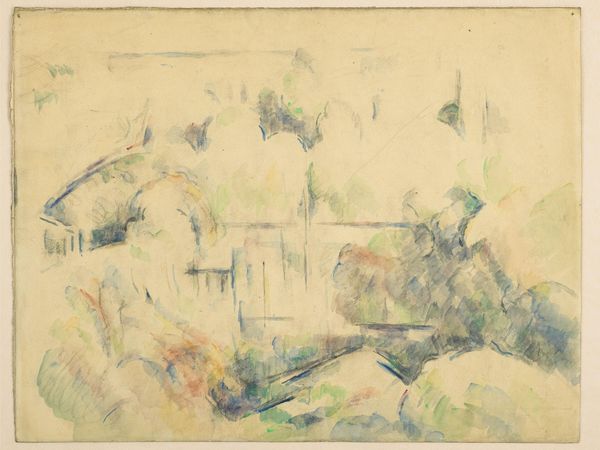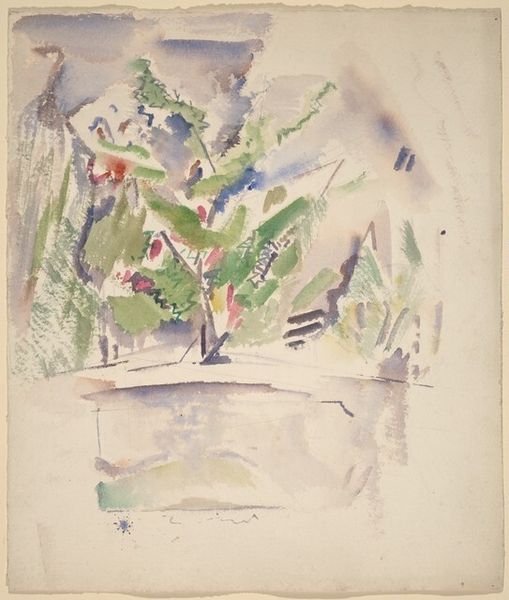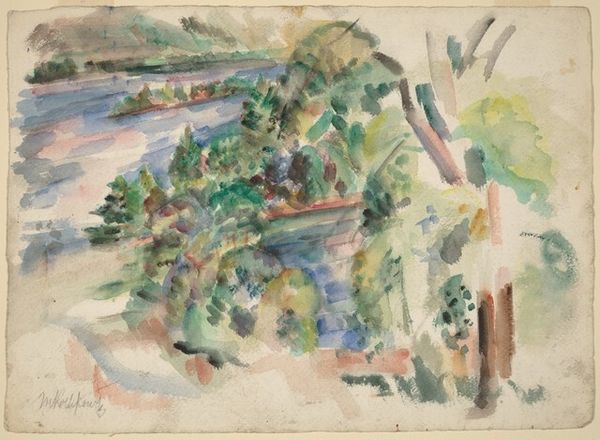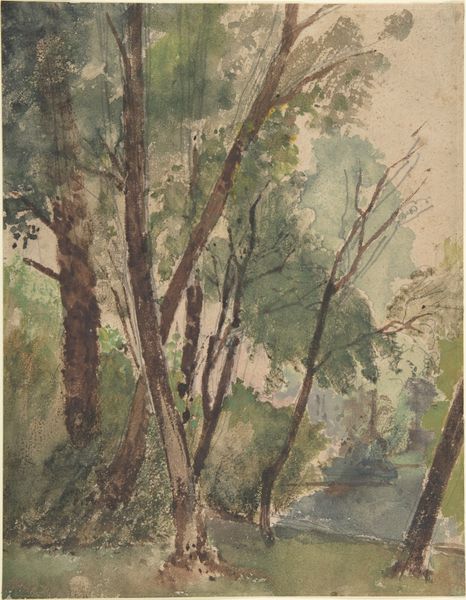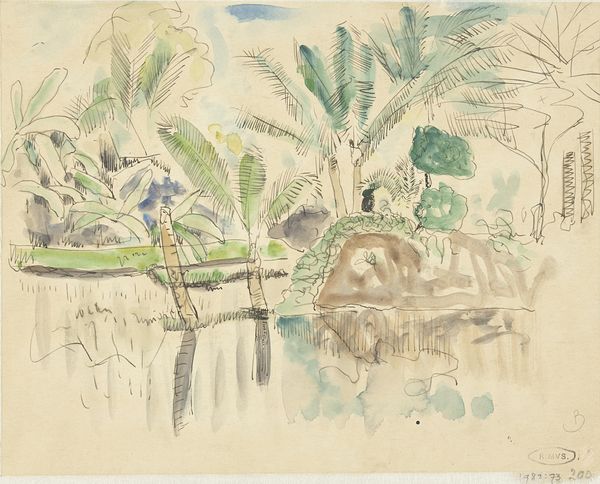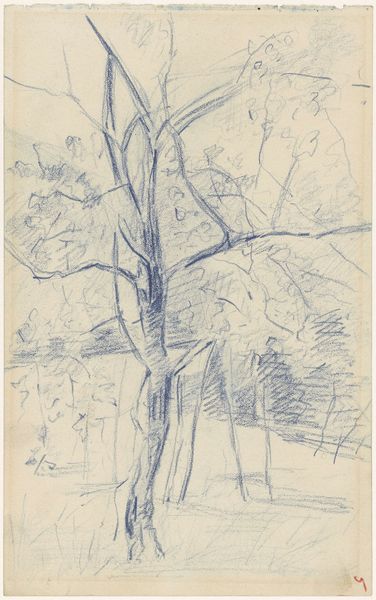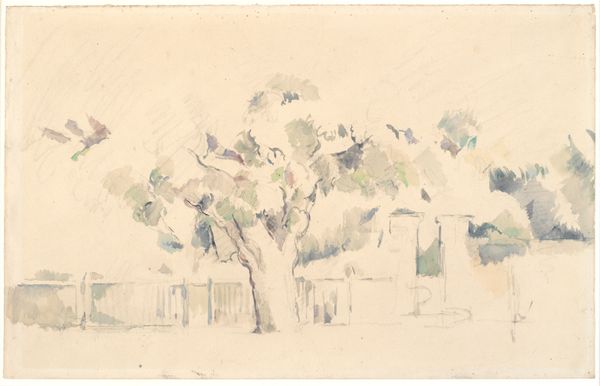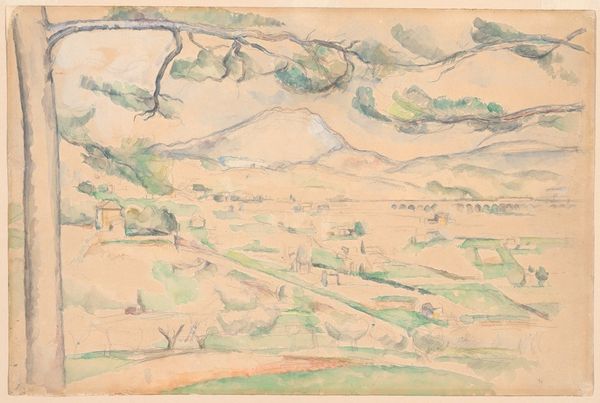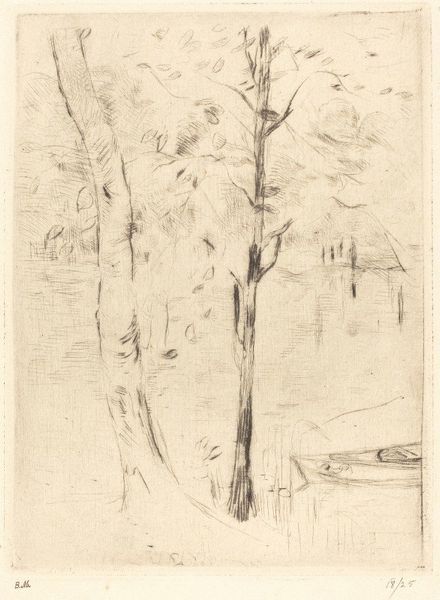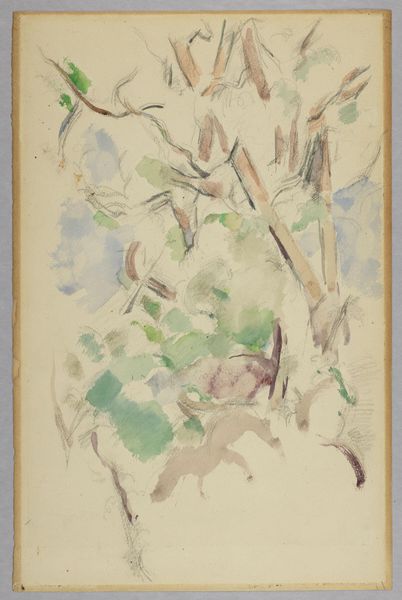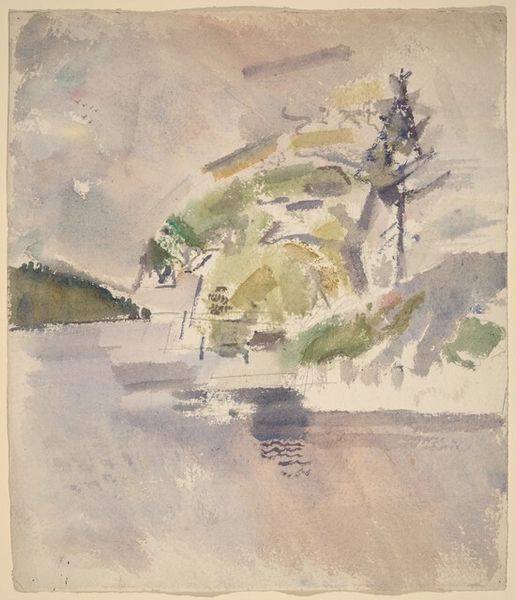
Mont Sainte-Victoire Seen beyond the Wall of the Jas de Bouffan c. 1885 - 1888
0:00
0:00
drawing, watercolor
#
drawing
#
impressionism
#
landscape
#
watercolor
#
coloured pencil
#
post-impressionism
#
watercolor
Dimensions: overall: 47.2 x 30.5 cm (18 9/16 x 12 in.)
Copyright: National Gallery of Art: CC0 1.0
Curator: This Paul Cézanne watercolor and pencil work, dating from around 1885 to 1888, captures Mont Sainte-Victoire as seen from Jas de Bouffan. It offers an intimate glimpse into Cézanne's artistic process, his home, and his deep connection to the landscape of his native Provence. Editor: It's incredibly ethereal. The washes of color and the hesitant pencil lines create this atmosphere of transience. It feels like a memory, viewed through the mist of time, that perfectly fits with its historical moment as it emerges out of impressionism and heads toward abstraction. Curator: Absolutely. Mont Sainte-Victoire held a profound significance for Cézanne, becoming almost an obsession for him. The mountain acts as a powerful cultural symbol representing the artist’s heritage. Beyond that, its recurring presence speaks to our longing for stability and the eternal quality of landscape as a contrast with the chaos of modern existence. Editor: That almost primal connection to the landscape really jumps out at me. See how the trees in the foreground frame the mountain? They remind me of the trees from the Garden of Eden, perhaps suggesting our expulsion and the mountain then acts as a distant promise of harmony. Curator: An insightful reading. You are pointing out an idea about a longing for a lost paradise that connects, I believe, with broader concerns of the late 19th century about industrialisation and anxieties concerning modern alienation. This vantage point at Jas de Bouffan, his family’s estate, afforded him a sanctuary, a space to contemplate these complex issues while reaffirming his bond with his origins. Editor: And that makes the choice of watercolor all the more compelling, the looseness implying the artist in search of a solid point of truth amidst swirling forces of change. It almost feels as if he's grounding himself through the very act of depiction. Curator: Precisely. Cézanne uses these repeated images to grasp not just the external likeness but an underlying essence of his location and, through it, perhaps a larger truth. These impressions, these delicate watercolors, helped him interrogate and ultimately solidify new visual methods, changing art forever. Editor: Seeing the world mediated in pigment... what a statement. It’s made me see Cézanne's efforts in a whole new light. Curator: And it also enriches my view to consider how our modern yearnings find echo and anticipation in works that came before us.
Comments
No comments
Be the first to comment and join the conversation on the ultimate creative platform.
